The Buds of Spring
By John Palka — Posted May 6, 2018
For those of us living in the temperate zones of planet Earth, there is probably no season more loved than spring. After months of dark and cold, rain and snow, the warm sun is like a caress on the skin and the new life bursting forth all around us touches the heart.
And there is perhaps nothing more emblematic of early spring than the opening of buds. While the colors of the winter months are mostly muted, spring brings fresh greens, pinks, yellows, and soon the full, vibrant palette of freshly emerged flowers. Where do all those fresh leaves and brilliant flowers come from? The buds.
The opening of buds raises a whole series of questions for the curious biologist:
- When are buds first formed?
- What keeps them from opening as soon as they are formed?
- What initiates their opening?
- What mechanisms cause the pre-formed leaves and flowers to so dramatically increase in size?
- What mechanisms insure that flowers soon fade while leaves last until the fall?
Nature invites us to ask her an unending stream of questions! We will approach a couple of them here.
THE BUDS OF SPRING
First, let’s enjoy some of the beauty that surrounds us in spring. Pictured below are some buds on a huge magnolia (Magnolia sp., Family Magnoliaceae) that grows in a friend’s back yard in Seattle. You can see both the enormous flower buds that are in the process of opening and the much smaller, pale green, leaf buds that will open later.
And here, from the same tree, is a flower well on its way to full exuberance and its biological function of reproduction.
In a magnolia there is just one flower encased in each bud. In some species, however, there are many, as in this big leaf maple (Acer macrophyllum, Family Aceraceae) on Whidbey Island in Puget Sound.
In the buds pictured above, you can see that each contains a cluster of flowers, all in the process of opening out. Below, you can see a cluster of fully expanded maple flowers. Botanists call such a cluster an inflorescence. The flowers within an inflorescence have a specific geometrical arrangement that is characteristic of the species.
WHEN DO BUDS FORM?
We already have a partial answer to the question, when do buds form? In the post Trees through the Seasons, we saw that the buds of alders (Alnus rubra, Family Betulaceae) were fully formed in the fall, even while the leaves were still on the branches. So, by the time these buds opened in March or April, they had been in place for at least six months.
Below is another example. The upper photograph shows the terminal buds on a branch of a sugar maple (Acer saccharum, Family Sapindaceae) in Minnesota, taken in October of 2017. There is a conspicuous, large terminal bud enclosed in its graceful scales and two tiny axillary buds tucked in alongside. The lower photograph shows similar buds photographed in April of 2018. There is only one real difference: the yellow leaf stalks that are so conspicuous in the upper (October) picture are gone in the lower (April) one, and all that remains in their place are the leaf scars. The buds themselves, however, are virtually identical, and again have remained fully formed but unopened for at least six months. They have been in a state of dormancy.
But wait a moment! In October we saw buds that were fully formed. That means they started to develop before that time. Buds generally become visible during the summer, and with the aid of a microscope the cells that will give rise to the buds of autumn can often be identified even earlier.
BUDS AND HORMONES
The behaviors of buds–entry into dormancy, emergence from dormancy, and many others–are influenced by hormones. We can illustrate this point by way of the phenomenon of apical dominance. Gardeners know that you can induce your trees and shrubs to branch more profusely by cutting or pinching off the terminal buds and thereby releasing the buds below them from inhibition. The photograph below shows a young sugar maple branch that illustrates apical dominance–the leaves of the terminal bud are expanding, but the third pair of buds from the tip looks like it will not open, and the leaf scar in the lower left of the picture does not even cradle the bud that we would expect to find there.
Inasmuch as axillary buds are inhibited at some distance from the apical bud, biologists long ago hypothesized that the inhibitory influence is mediated by a hormone. A search of many years revealed that the hormone in question is auxin. We have encountered auxin twice before: in the context of shoots maintaining upright growth in the face of being reoriented in the field of gravity, and in the control of leaf fall (abscission).
If cutting off the tip of a shoot frees the axillary buds below it from inhibition because the source of auxin is removed, then auxin from an outside source placed on the cut should restore the inhibitory effect. This proves to be the case. When a dab of auxin mixed into some lanolin paste is smeared on the cut, the buds lower down on the branch fail to open. They are inhibited just as they would have been had the terminal bud remained in place. This classic experiment is a compelling test of the auxin hypothesis. For this and many other reasons the auxin hypothesis for apical dominance remains widely accepted, albeit with numerous additions.
LINKING BUD BEHAVIOR TO THE SEASONS
As we have seen in previous posts, the lives of plants are tied to the seasons. This means they must be able to sense the seasons in some way and to translate that information into their behavior. Let’s consider just two of the important signals that plants use to come into alignment with the cycle of the seasons, particularly during the transitions of fall and spring.
Temperature. Temperature in our latitudes cycles between the heat of summer and the cold of winter, so temperature can be a useful signal for plants. Temperature, however, fluctuates substantially from day to day, as well as from year to year. Therefore, temperature alone would not be a reliable signal for the initiation of dormancy, bud break, or any other aspect of plant behavior.
Photoperiod. By this we mean the relative length of day and night, which changes in a systematic way through the year (think of the solstices and the equinoxes). Surprisingly, it is actually the duration of the dark (not the light) that usually governs plant behavior.
Inducing and breaking winter dormancy. How do temperature and photoperiod combine to guide buds into and out of dormancy? Here is a highly simplified version of the story.
The cues for initiating winter dormancy include both longer nights and lower temperatures. A hormone, abscissic acid, plays a role in linking long nights to the quiescent metabolic state that constitutes dormancy.
The cues for breaking dormancy include both shorter nights and higher temperatures, though in this case the higher temperatures appear to play the greater role. In addition, many plants will not break winter dormancy unless they have been exposed to a sufficiently long series of low temperatures, a phenomenon known as vernalization (getting ready for spring). This requirement makes it less likely that an early, short warming period will prompt buds to open, only to be damaged or killed by the return of the cold.
In order for temperature to serve as one of the cues for bud behavior, the plant must be able to measure temperature (it must have some sort of biological thermometer) and to translate this information into growth commands.
In order to use photoperiod to guide its development, a plant has to be able to detect light and to measure time. As with temperature, the plant must also translate this information into growth commands.
We will look at the actual mechanisms for sensing important environmental cues in another post. For the moment, suffice it to say that sensing light requires a pigment, and the pigment that plays a role in measuring day length is different from any we have encountered on Nature’s Depths heretofore. Plus, sensing time requires a clock. What sort of clock might exist within a plant? Just a little teaser for the future!
VARIATIONS ON A THEME
If you look carefully at the photographs of the big leaf maples (Acer macrophyllum) near the beginning of this post, you will see that by the time the flowers are mature, at least some leaves have appeared as well. Thus, in this species, flower buds and leaf buds open close together. The photograph of the sugar maple (Acer saccharum) buds opening shows a different situation. There the leaf buds are opening but the flower buds are not. Silver maples (Acer saccharinum) are different still. Below are photographs of their male flowers (above), characterized by white stamens and anthers, and of their female flowers (below), recognized by bright red styles and stigmas. The associated leaf buds seen in these photographs are still tightly closed. There is not a leaf to be seen anywhere, neither near the flowers nor anywhere else on the tree. Three species, three sequences.
Because the opening of flower buds is not tied to the opening of leaf buds or vice versa, it must be true that the mechanisms controlling these two behaviors differ from one another in some way. One possibility, proposed many years ago, is that flowering is stimulated by its own hormone, florigen. An important early piece of evidence for the existence of such a hormone was the finding that flowering can be induced in an individual plant that is not yet in bloom by grafting it to a different individual that is already flowering.
In recent years a strong candidate for this hormone has emerged, a substance called FT protein. For technical reasons, however, these recent experiments have mostly been done on just one species, an annual called Arabidopsis thaliana (Family Brassicaceae). In this species, FT protein produced in the leaves is transported upward and causes the tip of a growing shoot to stop producing leaves and to produce flowers instead. Investigators are just starting to understand how these findings might apply to trees in which separate leaf and flower buds are formed during the previous growing season. It’s complicated!
SPRINGTIME WALKS
Spring days prompt us to step outside and revel in the sunshine and in all the life that is reappearing all around us, especially the buds and flowers that are bursting forth. If we pay attention to the details of what is happening and remember just a few of the processes taking place within the plants—changes beyond our immediate sensory experience—we will find that there is even more to relish. Try it and see!
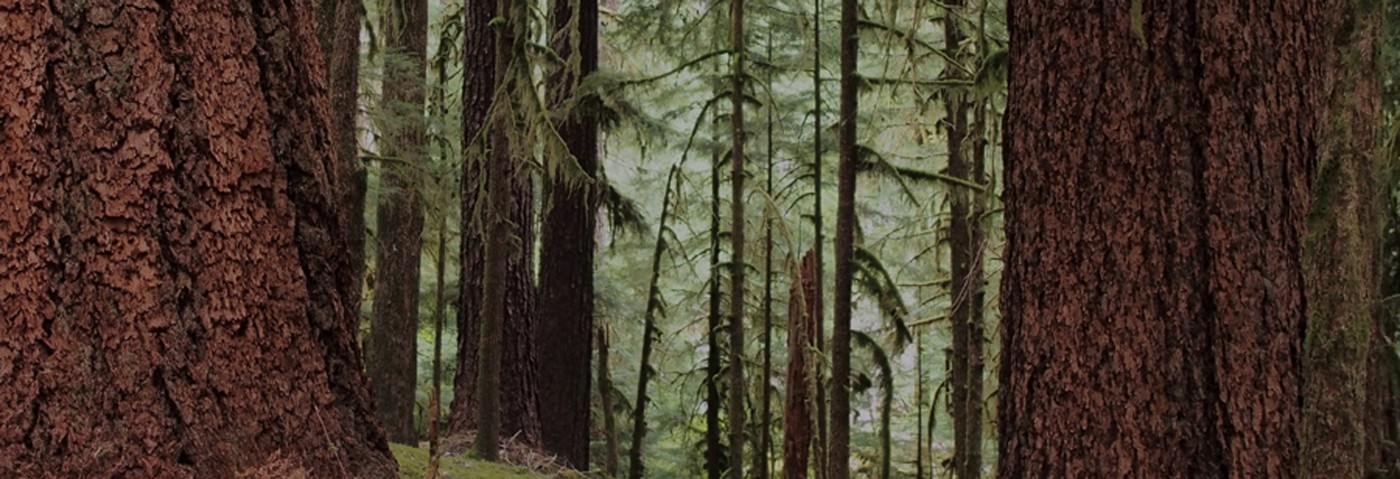
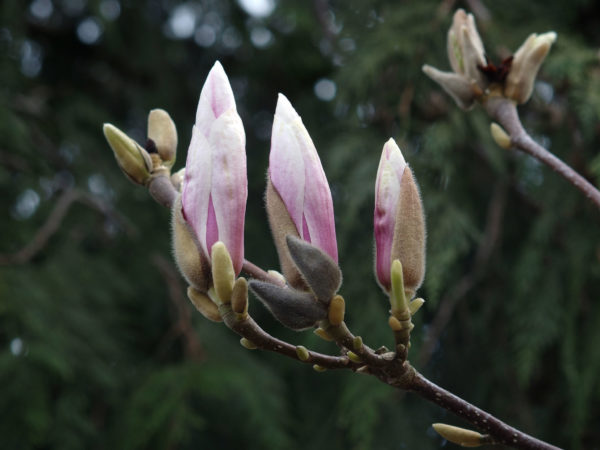
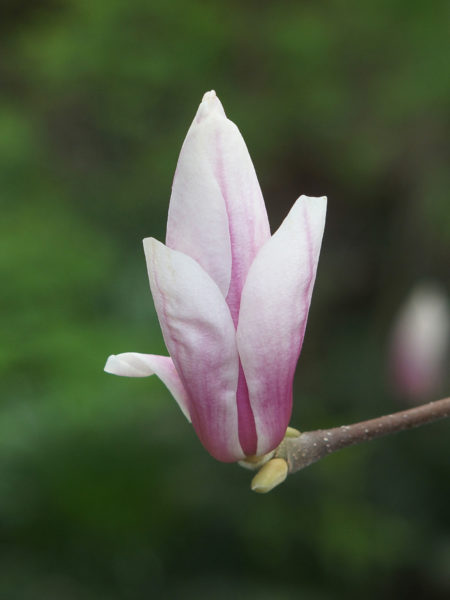
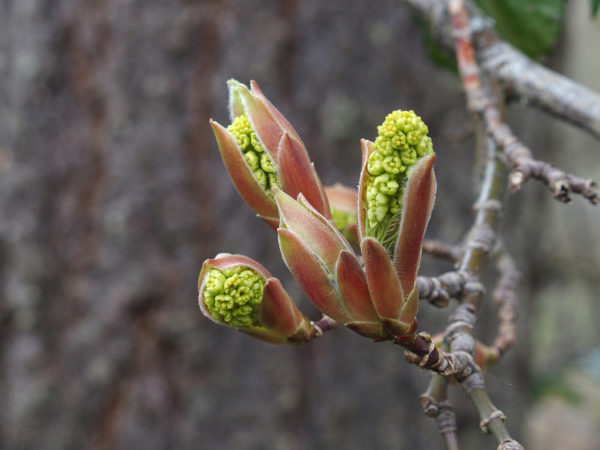

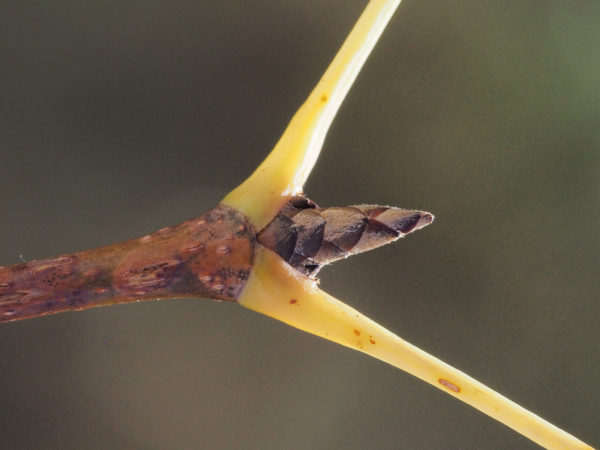
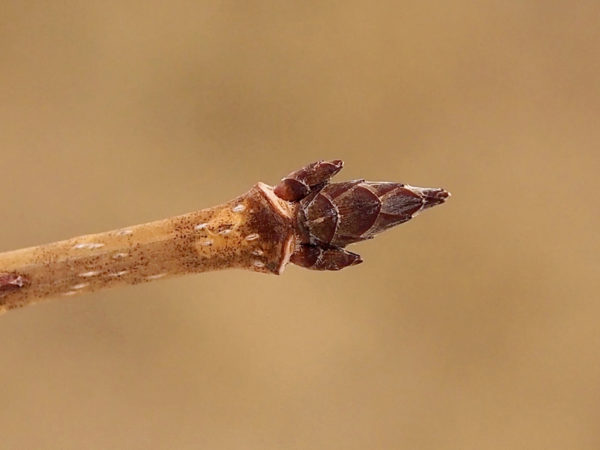
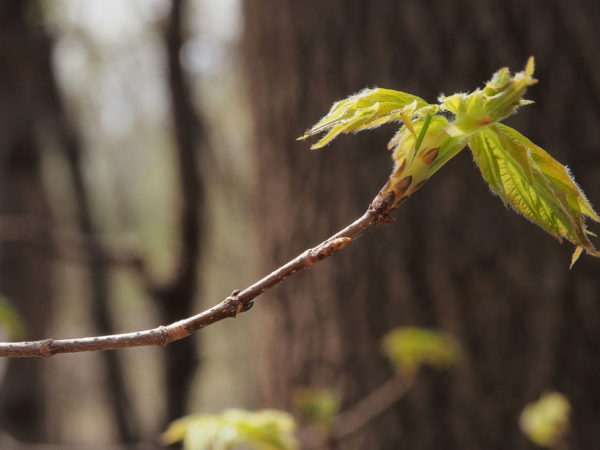
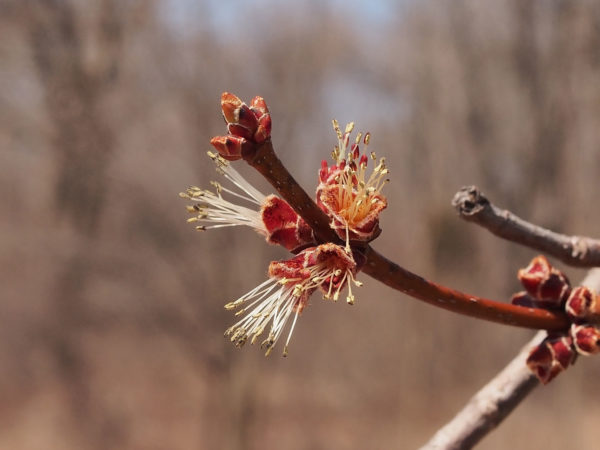

Yet another interesting lesson in plant science. Thanks, Johnny!
I sure learned a lot in preparing it. As the old adage goes, you really learn things when you start to teach them!
Magnolia petals have now fallen and the green leaves are big enough to begin to shade the yard. Each year I ponder the blooming triggers for the magnolia in the back yard and the flowering cherry in the front. The magnolia is always first but the cherry has been from 3 days to 4 weeks later. Any ideas?
Really enjoyed the post.
The details of plant annual cycles are influenced by genetics, and are as much a part of the biology of individual species as are size, shape, and color. So, evolutionary history would be my first guess. It would not surprise me if there were horticultural strains of both magnolias and cherries in which the time of flowering has been modified by selection.
Thanks Johnny- great ‘short course’ as usual!!
I commented just yesterday how the filmy Spring green leaves allow the structure of the trees to remain highly visible while ‘cloaked’ in the new color! …nice!
Yes, isn’t that wonderful. I am planning a walk in the woods this afternoon precisely to continue enjoying the color cloaking the dramatic shapes of the trees.
Johnny,
Thanks for another wonderful post. A couple weeks ago as I walked through the fields, I became curious about how the field was covered with yellow dandelions, but a few had burst into fluffy white (technical term). How so – with no intermediate stages how could it happen so quickly. So I carefully opened the base of a yellow flower, and there was the fluff – just waiting. Such incredible detailed design!
Yup. Mother Nature is full of surprises, and she also plans ahead!
Very informative–I had no idea that maples varied so much within the genus in terms of leaf and flower opening. Did you notice differences this year because of the long cold spell in the midwest?
I didn’t notice anything special this year, but that doesn’t mean much since this is the first time we’re experiencing a Midwestern spring!
Fascinating. You mention that plants will not break dormancy without a “sufficiently long series of low nighttime temperatures.” And I was surprised that the length of night is more important than the length of daylight in cueing the end of dormancy. Is daylight warmth by itself important in any way to plants in spring, or are they mostly concerned with avoiding frost?
And indeed, I’m looking forward to learning how plants measure time!
Brock Haussamen
Thanks for reading so carefully, Brock. You prompted me to check into the relative roles of daytime and nighttime temperatures and I quickly discovered that my reference to the importance of nighttime temperatures for effective vernalization was mistaken. Daytime temps matter just as much. In some species the phenomenon of devernalization, the reversal of the vernalizing effects of cold by a period of warmth, has been demonstrated. This warmth can occur exclusively during the day, while the nights stay cold. Clearly, then, daytime temperature matters. I have removed the offending word “nighttime” from my description of vernalization. There’s always more to be learned!
Thanks so much, John. I appreciate your following up. I know the more I learn about how plants stay alive, the more deeply impressed I am. Thanks again.
Brock
Hey I am so thrilled I found your blog, I really found you
by mistake, while I was looking on Bing for something else, Anyhow I am here now and would just like to say cheers for a remarkable post and a all round
thrilling blog (I also love the theme/design), I don’t have time to read through it all
at the moment but I have bookmarked it and
also added your RSS feeds, so when I have time I will be back to read
much more, Please do keep up the awesome work.
Thank you!
Dear Mr. Palka,
I really enjoyed reading The Buds of Spring. Your writing has really inspired me. Thank you. Can you please let me know in which of your Explorations I may find your promised post:
“We will look at the actual mechanisms for sensing important environmental cues in another post. For the moment, suffice it to say that sensing light requires a pigment, and the pigment that plays a role in measuring day length is different from any we have encountered on Nature’s Depths heretofore. Plus, sensing time requires a clock. What sort of clock might exist within a plant? Just a little teaser for the future!”
I am really very keen on understanding this part.
Kind regards.
Dear Nuraiya, I’m very glad that you are finding Nature’s Depths rewarding. As for the promise of a post on light and clocks, I’m afraid it has been only partially fulfilled. Here is what you can look at. In “Seeing Colors” (December, 2015) you will find the first of several discussions of pigments. In “Growing Upward – B” (June 12, 2016) you will find the description of a different sensing system that is prominent in plants, the system that senses gravity and allows plants to grow upward. The logic of the system – from sensing to signaling to responding – is that same as for flowering and other processes that are dependent on light inputs. In “When the Leaf Falls” (December 2, 2017) you will find information about how a seasonal signal is transformed into another response, the release (abscission) of leaves from their branches. And in “Connected with Planet Earth” (September 13, 2020) you will find a discussion of biological clocks. The example is migrating monarch butterflies who need to know the time of day in order to use the Sun as a compass, but the principles are the same. What I have not yet described is the details of the specific process you are asking about, a plant’s responses to changing daylength, starting with the pigment that is used to detect light for this specific purpose. This would be a good topic for the coming spring, would it not?
Dear John,
Thank you so much for your quick response: you are a star.
Indeed. I think that would be a good topic for spring. In the meantime, I will be reading all your Explorations and Ruminations: excellent reading for this winter.
Once again, thank you and regards,
Nuraiya
your writing always provides a different perspective,
Thank you
I’m glad that it affects you in this way, Panji. That is one of my goals.
helped with school work
That’s great! Thanks for letting me know.